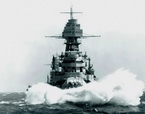Dimitris
Posts: 13282
Joined: 7/31/2005
Status: offline

|
quote:
ORIGINAL: Blu3wolf
quote:
ORIGINAL: mikmyk
quote:
ORIGINAL: Blu3wolf
I don't get it... is that a reference to something?
EDIT: So, I just googled Kurt Plummer... that guy does not have a good rep, it seems. I found a post where he bashed the Super Hornet on a modelling forum... which is bad enough for me!
however, I don't appreciate the implication that my posts are pseudo-intellectual BS - which, insofar as I could tell, his all were.
Actually I'm a huge fan of his and so are the rest of us. If you google anything about us you'll find us talking about him.
I wouldn't regard your BS and pseudo intellectual at all
okay... well, taking that into consideration, Im not Kurt Plummer, and Im hardly able to jduge much on his posting... as I only found one post actually attributed to him. seems Im getting a little off topic though, and I apologize for jumping to conclusions RE psuedo intellectual BS and RE your comment.
As an example of why we follow Kurt's writings very carefully:
quote:
Which brings me to the AIM-54. Called the Phoenix but known as the Buffalo,
despite a 'Mach 4 class' (Mach 3.8, AIM-54A Rocketdyne Mk.47 motor) and even
'Mach 5 class' (Mach 4.5, AIM-54C, Aerojet Mk.60 motor) what you have in
this weapon is a 'trainwreck' (or a thundering herd of buffalo, driven off a
cliff) mechanic in which a very slow start and midcourse also employs
terminal dive attacks that (though greatly complicating endgame intercept
geometry for the missile) reenergize it's final approach.
As an example of how bad this 'getting there' deficit can be- In April 1973,
a single Tomcat, flying a standard loiter at about Mach .67 and 25,000ft
(i.e. a preplaced FORCAP orbit), with one AIM-54 Phoenix aboard (minimum
weight and drag) was turned to intercept a BQM-34E which was _itself_
closing at Mach 1.5 and 50,000ft. Starting from initial detection at 132nm,
the F-14 flew an additional 20nm (1 minute) to achieve firing parameters of
Mach 1.5 and 44,000ft. The missile then flew for 2.62 minutes or 157
seconds. To achieve a downrange intercept at a mere 72.5nm. DURING THIS
TIME, average /missile/ velocity, including the parent boost and a specially
tailored (engineers spent all night tweaking the analogue autopilot gains,
something which would never happen in the fleet) profile of 103,500ft
altitude (as near zero-drag vacuum as you can get) was no more than 1,656
knots. Or roughly Mach 2.93.
What happens if, the target turns away? If the target is going slower? If
the target performs a beaming or 'notch' maneuver? If the target postholes
down into the clutter where the Hi-PRF looses it in the clutter? The missile
misses that's what.
In another 'miracle mile' event, an F-14, firing at a BQM-34A with an
initial setup of 10,000ft and Mach .72 vs 50ft and Mach .75 at 22nm
separation showed the weapon intercepted at around 16nm in 54 seconds.
DESPITE being a SARH-PDSTT all the way (no firing lag to account for time
share TWS on multiple missiles) in nominally 'snap down' assisted conditions
for acceleration, where there was no time spent climbing to the loft.
DESPITE the fact that the missile was indeed /powered throughout the
flight/. Average Missile Mach was only 1.88.
In the 'so impressive' 6v.6 engagement, the aircraft _could not_ achieve
'maximum kinetic assist' because, with six Phoenix aboard, it didn't have
the gusto to do more than about Mach 1.2 and could not achieve even this _in
the time available_ to initiate TWS tracking on 'fighter sized' (3-5m
augmented drones) targets. And the crew were pressed so hard already (in
retaining adequate radar scan volume overlay) that, instead of a wall or
conventional shelf, the UT-33 and BQM-34 were arranged in an 'extended card'
type formation with azimuth spacings on the order of 5nm in frontage (three
sets of two for 15nm) and with upwards of 35nm in trail (83 vs. 110nm) yet
only 5,000ft of altitude separation. What this allowed the F-14 to do was
generate a maximum X minimum scan of 120` X 2 bars in a giant pie-slice
sectoring of sky that kept everybody visible with missiles in the air and
with no AWS-27 (E-2) uplink.
Even so, at the outset of engagement, a completely bogus 'orchestration' of
formation behaviors had to occur so that none of the targets drifted out of
the scan volume or steamed right through it so that the initial drones flew
at Mach .6 and the trailing aircraft at Mach .8 while the last was a
'sprinter' coming in at about Mach 1.2 to play catchup. The F-14 initiated
firing at a mere 31nm and continued to do so over a steady-flight period of
38 seconds, opening up on the closest targets /last/ (exposing itself to
their weapons systems) to ensure that 'all missiles impacted within a few
seconds of each other' for a virtual simultaneous seeming engagement. As a
part of this exercise in idiocy, it 'maxxed the dot' (ASE starboard) so that
it could bias it's TWS volume into the target lane while setting the
geometry physically to engage the final AQM-37 (sprint) target coming up the
far right side of the engagement.
/Conveniently/, not only did the drones all arrive at co-pole distance with
the missiles due to their careful range distribution, but they actually
/curved inwards/ to follow the Tomcat (like a drunk crossing lanes into
oncoming traffic) so as to better stay in-volume.
'And So', over a total period of 3.92 minutes (235 seconds, 33 miles at Mach
.9, 55 miles at Mach 1.5, a /veritable eternity/ in fighter vs. fighter ops)
the Tomcat killed all but the furthest-out (lefthand biased) 2 targets,
thereby proving that multi-on-multi _did not_ work. Because even with all
this grooming of the engagement variables, the AWG could not keep everybody
under track long enough to get a missile out to each of them, dumping one
target completely before the AIM-54 could hand off. While the other drone
had its FQ augmentation now so far out of field that the AIM-54 itself could
not maintain the target track at the severe crossing angle.
Keep in mind that NONE of these were 'valid kills' because despite the
nominally /enormous/ LAR or 'Launch Acceptability Region' of the Phoenix
itself, the combination of scan lag and limited PRF ability to handle
various low closure/high crossing angle targets through the Hi/Lo interleave
ensured that TWS was unavailable until a point (roughly 50nm) at which the
structured missile flyout sequencing necessary to get all six targets
challenged the assumption of killing before being killed. And so, regardless
of supposed simultaneity, the entire raid behavior was suspect, not only for
being designed to bring the targets into the Phoenix envelope ONLY as the
weapons came to bear. But rather for what it did NOT require the Tomcat crew
to do so as to avoid threat bypass or direct engagement of the F-14 itself.
This is something which no halfway competent (threat) fighter pilot would
'step into' as he:
1. Doubled the altitude separation so as to force the F-14 RIO to compress
his azimuth scan field to deepen the bar search.
2. Transited the combat area at a MINIMUM 550 knots or Mach .95 to compress
the flyout vs. SARH timeshare problem even more.
3. Maximized his formation frontage densities to make sure the Tomcat had to
open fire at closer to maximum (TWS interleave) of 50-60nm to have a hope of
killing all targets in a very tight separation of missile guidance updates.
For which sudden, drastic, formation changes would leave little or no
ability to adjust final missile update steering into handoff conditions.
All of which leads to the generalized sarcasm of "Ignoring the Phoenix
shots..." among those AF pilots in particular who sparred with the USN
Tomcat community off Rota Spain during the late 70's and early 80's when the
AIM-54/AWG-9 was at the height of its 'mystical' powers (achievement is the
inverse of expectation, the Pentagon Paradox).
Indeed, the saddest element of this story is that no Tomcat has ever flown a
Fleet Defense Bravo loadout of six missiles in active (cruise) service. They
cannot safely recover or (single engine ROC) launch with that much weight.
And further they cannot themselves maintain adequate smash to aggressively
maneuver at altitude to set the geometry vs. fighter targets without going
supersonic which both eats fuel and instantly compresses the fight. Indeed,
most of the squadrons did even not deploy (before 1988 anyway) with the
outboard horn rails because they were draggy as hell and a pain to
mount/dismount in trade for the more common Sparrow or even Sidewinder (6X2
or 4X4) alternate loadouts. Lastly, the USN only produced about 5,000
AIM-54s and of those, only about half were the AIM-54C+ 'ECCM/Sealed'
(either as new or by conversion) which had the seeker, warhead fuzing and
autopilot upgrades to be any good against more than the dumbest threats. The
/total/ number is only sufficient to allow every Tomcat a Fleet Defense
Alpha loadout of 4 missiles. One time. And the actual magazine count during
cruise was never more than a fraction of even this (back when there were
actually two squadrons of 12 Tomcats on every deck).
_____________________________
|
 Printable Version
Printable Version










 ....more,
....more, 
 New Messages
New Messages No New Messages
No New Messages Hot Topic w/ New Messages
Hot Topic w/ New Messages Hot Topic w/o New Messages
Hot Topic w/o New Messages Locked w/ New Messages
Locked w/ New Messages Locked w/o New Messages
Locked w/o New Messages Post New Thread
Post New Thread